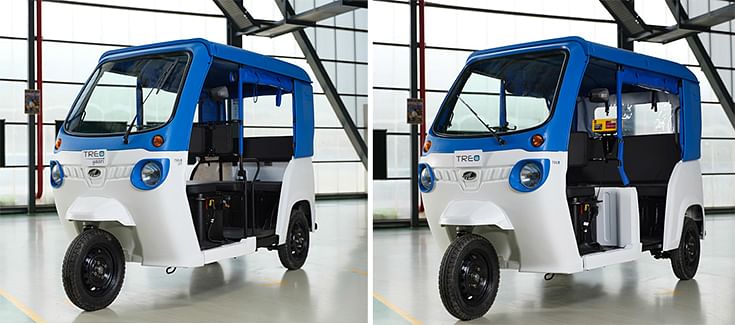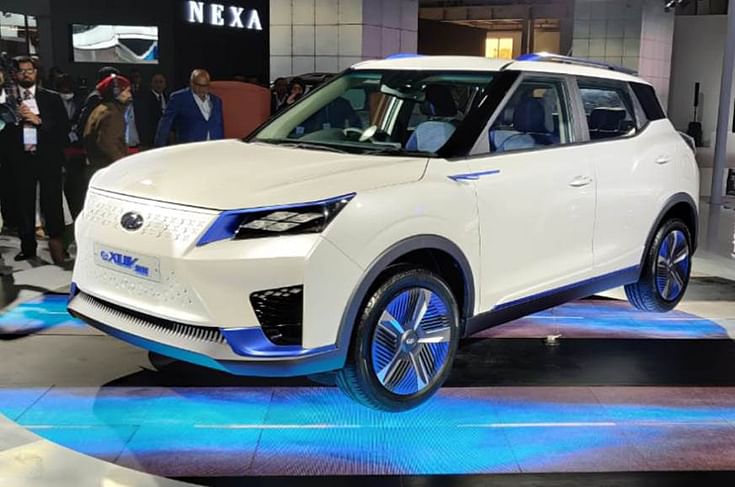Mahindra Electric targets 2023 for spurt in personal EV sales
EV maker to focus on shared mobility segment for the next two years, with a ‘winning strategy’ in place for growth in desirable personal EVs.
As the nascent electric vehicle ecosystem is beginning to see some action in India with recent launches from players such as Tata Motors, Hyundai Motor India, and MG Motor India, the pioneer of e-mobility in the country, Mahindra Electric believes that it is not lagging behind but rather working with a long-term vision to prosper when EVs really see an inflection point in the coming two to three years’ time in the personal mobility space.
In an exclusive interaction with Autocar India’s editor, Hormazd Sorabjee, on the occasion of World Environment Day on June 5, Mahesh Babu, MD and CEO, Mahindra Electric said that growth in the EV space should be viewed from the perspective of at least the next decade. According to Babu, “The race to electric has only just begun, and we are only at the start of the start.”

In June 2019, Mahindra Electric launched the electric Treo Yaari semi-hard-top three-wheeler (left) for Rs 177,000 and the Treo semi-hard-top at Rs 279,000 (ex-showroom Delhi).
Mahindra Electric can be credited to have pioneered the e-mobility space in India when its parent Mahindra & Mahindra plugged into the green motoring phenomenon back in 1999 with the Bijlee electric-three wheeler. Mahindra Electric then went on to introduce the e2O and the e2O Plus hatchbacks, alongside the e-Verito sedan and in June 2019 India’s first lithium-ion three-wheeler – Treo. It began FY2021 by launching the e-KUV100 at the Auto Expo 2020 earlier in February as well as showcasing the production version of its Atom quadricycle.
However, with shifting paradigms, the company also took a conscious call of transforming itself into an EV drivetrain supplier and instead of only selling cars under the Mahindra Electric brand, target other OEMs with its EV technology.

M&M has invested Rs 1700 crore in its EV business so far, and an additional Rs 500 crore is earmarked for an EV R&D centre.
2023: an inflection point for personal EVs
According to Babu, the company’s main focus over the next two years will rely on the shared mobility segments with their demand for electric three- and two-wheelers. “The India story has always been that of three-wheelers as with the current FAME subsidy, electric three-wheelers are almost at breakeven level,” he added.
He further explained that with over 90-95 percent of the value of the electric three-wheeler being financed, the net outflow including EMI and fuel cost is lesser than an ICE three-wheeler. On the other hand, application of electric passenger vehicles in the fleet segment such as for corporate transportation as well as on a leased model is highly successful as the high cost of acquisition is quickly recovered through higher annual running.
Mahindra Electric has already seen this in the case of Bangalore-based Lithium, which is a service provider for employee transportation and has a first-hand experience of its existing fleet already clock over 100 million kilometres, with over 500 Mahindra EVs covering a distance of over 100,000km and 75 even going beyond 200,000km – a significant achievement for the company’s products.
The company envisions that the off-take of e-mobility in personal mobility space will actually start becoming visible only between 2023 and 2025, when the current estimates of 10-15 percent reduction in battery prices over the next two- to- three years would start making economic sense for personal EV users as well.
“The personal mobility segment is the toughest to crack because average driving distances range between 10,000km to 15,000km annually. At this running, the puzzle is extremely difficult to solve at the current battery prices,” said Babu. However, when the breakeven does happen, “that is the time we need to be ready with all the products including high-voltage EVs,” he pointed out.
Even as battery prices may move towards the threshold barrier of US$ 100 per kWh, Babu says that the breakeven won’t happen with the reduction in battery prices alone. “We will have to come up with new business models such as car leasing so that people can drive cars without owning them, or even be able to lease the battery alone. This sort of innovation is required in this space much more than the product itself in order to push buyers to adopt EVs,” he remarked.
Babu believes that as every technology takes its own time to evolve, but ICE will not die anytime soon. “EVs will take a longer time to flourish in certain segments.”
“While both ICE and EVs will see incremental improvements, going forward, all new investments will majorly be pushed in the direction of sustainable mobility technologies,” he said.
Mahindra’s high-voltage drivetrain for Ssangyong
While it might not have a readily available high-voltage product in its current model portfolio, in line with its strategy of acting as an electric drivetrain supplier, Mahindra Electric has invested Rs 500 crore in setting up a new EV assembly line spread over an area of 20,000 square metres within its parent Mahindra & Mahindra’s vehicle manufacturing plant in Chakan, Pune. The new facility is set to produce drivetrain components in-house alongside carrying out battery assembly, for which the company says it has partnered LG Chemicals to procure the lithium-ion cells.

All-electric XUV300, showcased at the Auto Expo 2020 in February, is likely to be offered with two battery pack options. Launch slated to be in second half of 2021.
Babu revealed that Mahindra Electric also initially plans to supply a 350V high-voltage drivetrain to Ssangyong and later bring such technologically-advanced solutions to the Indian market as well. The drivetrain is likely to power the all-electric Ssangyong Tivoli, which was also showcased in its Indian avatar – Mahindra XUV300 electric – at the Auto Expo 2020.
“We have the complete knowledge of various vehicle attributes such as charging patterns and battery life, which we feel is common for 48V, 72V and other high-voltage powertrains. We have the technology as well as a winning strategy at hand. We will deploy that knowledge accordingly at the appropriate time in India,” added Babu.
PPP model for charging infra
Despite being advanced in terms of technology, electric vehicles still are at their nascent stage of adoption due to a range of issues including high cost of acquisition which is topped by lack of charging infrastructure and range anxiety among users.
Babu explained that while charging is a real problem, it is overrated in many of the times. “Globally, 90 percent of the times, electric cars are charged from normal slow chargers, and of that, 70 percent is charged at home. 15 percent are charged at public places from slow charges and only the remaining 5 percent are charged using fast chargers.
“So, does it really make a business sense to install such high-speed chargers?” queried Babu.
“While two-wheelers and three-wheelers can easily run for a day’s usage on a single charge, we have to offer a combination of different charging solutions to offer range comfort to EV users.
“It, however, cannot be done by alone by government or private players. For automotive OEMs, charging is not their forte and they could only provide the initial funding. For going mass scale, there has to be a PPP model with involvement of start-ups. The government could give some leeway for the initial 3-5 years in terms of financial benefits to the early investors into this space,” he remarked.
Breakthrough in battery tech
Another critical aspect with regards EVs is the recyclability of lithium-ion batteries as well as a breakthrough technology that might rapidly bring the battery prices down.
According to Babu, “Lithium-ion batteries are there in phones and tablets as well. All lithium can be extracted from these batteries by up to 70 percent. Today, India has battery recycling plants even before we have a cell manufacturing plant.”
In terms of the cell chemistries, Babu explained that while lithium-ion is reaching the tip of the S-curve when it comes to efficiency, the only things to look out for now are the energy density and cost.
He mentioned that a lot of efforts including investments and filing of patents are already being undertaken in other technologies which would have lesser cobalt and nickel.
“I strongly believe that the next cell chemistry will take over the S-curve and bring down the battery prices to less than US$ 80 per kWh,” concluded Babu on an optimistic note.
READ MORE
Mahindra MESMA EV platform-based Ssangyong Tivoli snapped testing
Mahindra showcases its future-readiness at Auto Expo 2020 across EVs, petrol power and BS VI
Mahindra & Mahindra open to other OEMs joining as co-owners in Mahindra Electric
Mahindra Electric reveals new brand identity, aims to become a global supplier for EV solutions
RELATED ARTICLES
VinFast’s second plant in Vietnam goes on stream ahead of India factory
Vietnamese EV maker’s second plant in its home market, which has a 200,000 EVs-per-annum capacity, will focus on produci...
Continental exits TBR market in India, shifts focus to car and SUV radials
German tyre manufacturer aims to tap the double-digit market growth opportunity for big SUV and luxury car tyres which w...
New ZF SELECT e-drive platform gives EV makers a choice in 100 to 300 kW range
Modular e-drive platform optimally matches 800-volt overall system and components such as the electric motor and power e...





 06 Jun 2020
06 Jun 2020
 24332 Views
24332 Views
















 Autocar Professional Bureau
Autocar Professional Bureau




